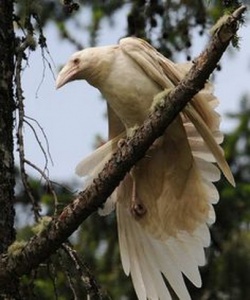Crows in heraldry
Crows and other corvidae in heraldry (family coats of arms) may represent harshness or avarice. The crow is depicted in heraldry with hairy feathers and is close by default. A crow speaking will have its mouth agape or open as if it were speaking. Other corvidae appearing in heraldry are the raven and the Cornish cough.
The raven and crow are indistinguishable in use and appearance.
The Cornish chough is only distinguishable if proper, meaning depicted as black with red beak and feet.
The crow may also be called a corbie, as in the canting arms of Corbet, c.1312. For canting purposes, the Cornish cough is sometimes called a beckit (WKCH 2007).
Tradition, mythology and folklore
Crows, and especially ravens, often feature in European legends or mythology as portents or harbingers of doom or death, because of their dark plumage, unnerving calls, and tendency to eat carrion. They are commonly thought to circle above scenes of death such as battles. The Child ballad, The Three Ravens, depicts three ravens discussing whether they can eat a dead knight, but finds that his hawk, his hound, and his true love prevent them; in the parody version The Twa Corbies, these guards have already forgotten the dead man, and the ravens can eat their fill. Their depiction of evil has also led to some exaggeration of their appetite. In some films, crows are shown tearing out people's eyes while they are still alive.
In the Epic of Gilgamesh, the Chaldean myth, the character Utnapishtim releases a dove and a raven to find land; however, the dove merely circles and returns. Only then does Utnapishtim send forth the raven, who does not return. Utnapishtim extrapolates from this that the raven has found land, which is why it has not returned. This would seem to indicate some acknowledgment of crow intelligence, which may have been apparent even in ancient times, and to some might imply that the higher intelligence of crows, when compared to other birds, is striking enough that it was known even then.
In occult circles, distinctions are sometimes made between crows and ravens. In mythology and folklore as a whole, crows tend to be symbolic more of the spiritual aspect of death, or the transition of the spirit into the afterlife, whereas ravens tend more often to be associated with the negative (physical) aspect of death. However, few if any individual mythologies or folklores make such a distinction, and there are ample exceptions. Another reason for this distinction is that while crows are typically highly social animals, ravens do not seem to congregate in large numbers anywhere but:
Near carrion where they meet seemingly by chance, or
At cemeteries, where large numbers sometimes live together, even though carrion there is no more available (and probably less attainable) than any road or field.
Among Neopagans, crows are often thought to be highly psychic and are associated with the element of ether or spirit, rather than the element of air as with most other birds. This may in part be due to the long-standing occult tradition of associating the color black with "the abyss" of infinite knowledge (ashka), or perhaps also to the more modern occult belief that wearing the "color" black aids in psychic ability, as it absorbs more electromagnetic energy, since surfaces appear black by absorbing all frequencies in the visible spectrum, reflecting no color.
According to the Bible (Leviticus 11:15), crows are not kosher.
Compendium of Materia Medica states that crows are kind birds that feed their old and weakened parents; this is often cited as a fine example of filial piety.
In Chinese mythology, they believed that the world at one time had ten suns that were caused by 10 crows. The effect was devastating to the crops and nature, so they sent in their greatest archer Houyi to shoot down 9 crows and spare only one. Also in China, crows commonly symbolize bad luck, probably due to the color black.
Gods and goddesses associated with crows and ravens
A very incomplete list of gods and goddesses associated with crows and ravens includes the eponymous Pacific Northwest Native figures Raven and Crow; the ravens Hugin and Munin, who accompany the Norse god Odin; the Celtic goddesses the Mórrígan and/or the Badb (sometimes considered separate from Mórrígan); and Shani, a Hindu god who travels astride a crow.
In Buddhism, the Dharmapala (protector of the Dharma) Mahakala is represented by a crow in one of his physical/earthly forms. Avalokiteśvara/Chenrezig, who is reincarnated on Earth as the Dalai Lama, is often closely associated with the crow because it is said that when the first Dalai Lama was born, robbers attacked the family home. The parents fled and were unable to get to the infant Lama in time. When they returned the next morning expecting the worst, they found their home untouched, and a pair of crows were caring for the Dalai Lama. It is believed that crows heralded the birth of the First, Seventh, Eighth, Twelfth, and Fourteenth Lamas, the latter being the current Dalai Lama, Tenzin Gyatso. Crows are mentioned often in Buddhism, especially Tibetan disciplines.
In Greek mythology, it was believed that when the crows gave bad news to the goddess Athena, she flew into a rage, and cursed their feathers to be black.
In Hinduism, it is believed that people who died will take food and offerings through a variety of crows called "Bali kākka." Every year people whose parents or relatives died will offer food to crows as well as cows on the Shradha day.



